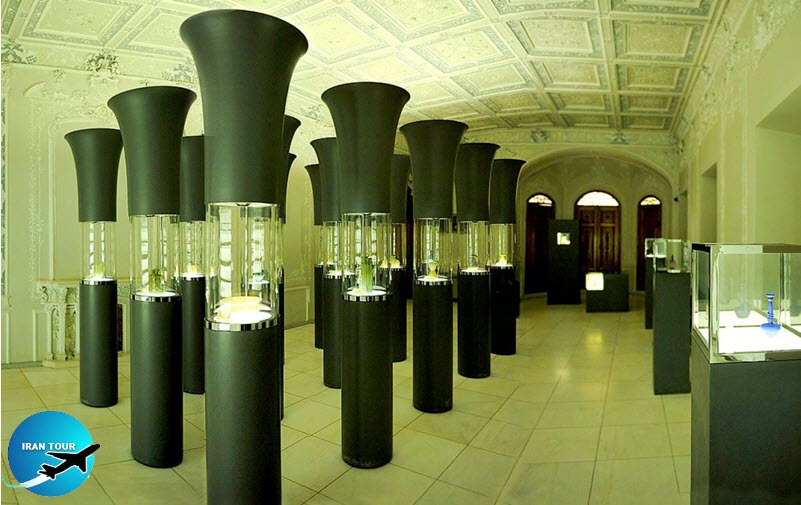Copyright 2020 - 2021 irantour.tours all right reserved
Designed by Behsazanhost
Tehran Glassware & Ceramic Museum: Iran's Churchill House
Tehran Glassware & Ceramic Museum: Iran's Churchill House
A unique display of glass and paint
A very beautiful octagonal bricked-up building in the 7,000-meter-garden, with a 100-year-old history from the residence of Iran's prime minister Qavam to the Egyptian Embassy and eventually a museum of glass masterpieces. Elegant brickwork in Seljuk style - colorful traditional windows and spacious rooms that will impress you. It is recommended to all visit Iran's Museum of Glass and Ceramics (Abgineh Museum). This museum is dedicated to the history of glass and ceramics in Iran. Its decoration is unique and could impress all visitors.
Have you ever known that Persia Empires have been using glass for over 4000 years? And you can see this glass in a museum by the name the glassware and ceramics! You can find a rare collection of glass and clay in this interesting museum with a unique building and architecture. You will see objects dating from the 4th millennium BC. until today as well as the glassworks of the 1st millennium BC. until the contemporary era.
 |
An Iranian building belongs to about 90 years ago upon the orders of Ahmad Qavam or Qavam
The museum was opened in 1980 and was registered on the list of national heritage in 1998. The main museum, which covers an area of 1040 square meters, is a two-story octagonal building with suspended pillars and a basement. The architectural style of the building is a mixture of traditional Iranian style and 19th-century European architecture. The first floor is launched to the second one by wooden steps in the Russian style. some parts of the basement's walls are decorated with traditional big tiles. Double windows are used in the building's architecture instead of the terrace and wooden doors were installed behind the windows to regulate the light and temperature of the building's interior. The exterior and interior of the museum include decorations such as bricks, plasters, mirrors, and inlays.
 |
Different decorations
1-Brickworks
About 50 types of brickworks of different designs and with different geometric and floral motifs were used outside the building and remember you the fine arts of the Seljuk era.
2-Plaster works
The interior Plaster works belong to three periods:
a) Plasterwork dating from the time of construction of the building (Qavam ol Saltaneh), visible in some parts of the entrance hall and in some other halls.
b) The plasterwork was carried out when the building was converted into the Egyptian embassy, as evidenced by the Mina and Bolour halls and the basement.
c) The plasterwork is done in 1984 by the Islamic Republic as a combination of calligraphy and painting that could be seen in the entrance hall of the second floor.
 |
3- Mirror Works
Mirrors with geometric or lemon motifs(citron-like) can be seen on the second floor, near the plasterwork.
4-Inlaid decoration
Some of the doors and the margins of the steps are decorated with Inlaid decoration and mainly with floral motifs.
 |
This museum has several sections:
Corridor
Bolour Hall
Mina Hall
Audio Visual Hall
Second Floor
Corridor
Sadaf Hall
Zarrin Hall
Lajvard Hall 1
Lajvard Hall 2
you can visit and enjoy from most beautiful glass and clay works belonging to the different historical periods. Also, there is a gift shop at the entrance of the museum that offers some different glass and clay gifts and some museum objects copy.
Visit the website of
http://www.glasswaremuseum.ir
- Details
- Category: Museums of Tehran